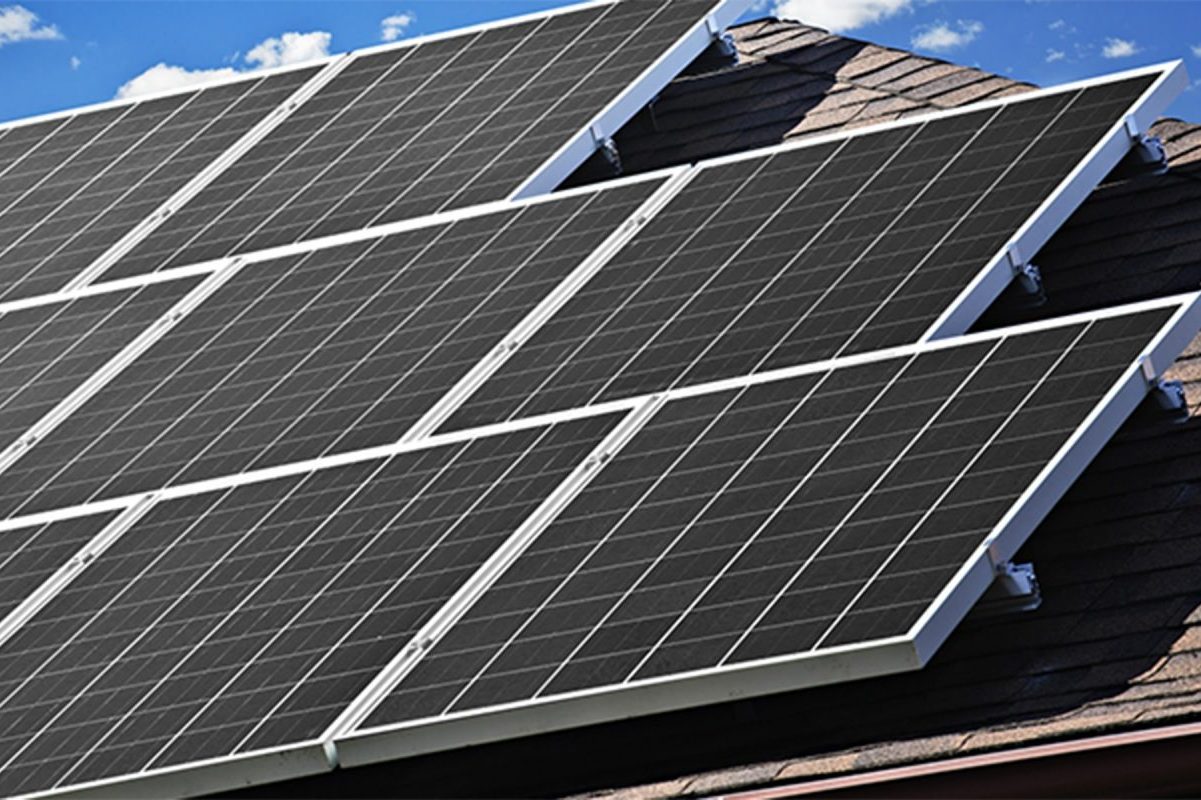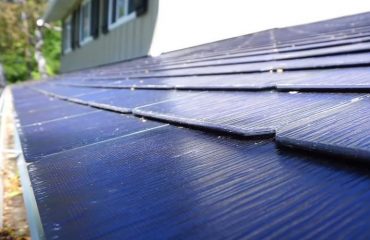From breakthrough efficiency to futuristic designs, today’s solar panels are pushing the boundaries of renewable energy technology. Innovative materials, cutting-edge production methods, and clever engineering are ushering in a new era of high-performance, affordable solar solutions. These groundbreaking innovations are empowering homeowners to harness the sun’s power in exciting new ways, slashing energy bills and shrinking carbon footprints like never before. Prepare to be amazed by the unique solar panels that are redefining what’s possible for clean, sustainable energy.

Solar Roof Tiles
Benefits of Solar Roof Tiles
Solar roof tiles offer a seamless and aesthetically pleasing alternative to traditional solar panels. These innovative tiles blend in with your existing roof, maintaining your home’s curb appeal while harnessing clean energy from the sun. Engineered for durability, solar roof tiles can withstand harsh weather conditions, providing long-lasting protection for your home. Their energy efficiency is unmatched, enabling you to significantly reduce your reliance on the grid and lower your monthly electricity bills. By investing in solar roof tiles, you’re not only enhancing the look and functionality of your home but also contributing to a more sustainable future for our planet.
Leading Solar Roof Tile Brands
Several leading companies are pioneering the development of solar roof tiles, providing homeowners with attractive and efficient renewable energy solutions. Tesla’s Solar Roof integrates sleek, durable tiles that mimic the appearance of traditional roofing materials while harnessing solar power. CertainTeed’s Apollo II solar shingles offer a low-profile, easy-to-install option that blends seamlessly with asphalt shingles. Luma Solar’s solar roof tiles feature a unique interlocking design for enhanced wind resistance and a streamlined aesthetic. Forward Labs’ metal roof tiles combine solar cells with a modern, standing seam look, suitable for various architectural styles. These innovative brands are leading the way in making solar roofing an accessible and appealing choice for eco-conscious homeowners.
Bifacial Solar Panels

How Bifacial Panels Work
Bifacial solar panels are an innovative technology that harnesses energy from both sides of the panel. Unlike traditional panels that capture sunlight only on the top surface, bifacial panels have solar cells on both the front and back. This dual-sided design allows them to absorb direct sunlight from above as well as reflected light from the ground or surrounding surfaces. By capturing more light, bifacial panels can generate up to 30% more electricity compared to standard monofacial panels. The backside of the panel is typically made of a transparent or glass backing, allowing light to pass through and reach the rear cells. Bifacial panels are particularly effective in locations with highly reflective surfaces, such as white roofs or light-colored ground coverings. They also perform well in vertical installations or tilted positions that optimize light capture from multiple angles. With their enhanced energy production and versatile applications, bifacial panels are a smart choice for maximizing solar power generation.
Ideal Conditions for Bifacial Panels
Bifacial solar panels thrive in environments with high albedo, or reflectivity, such as white roofs or light-colored surfaces. These reflective surfaces bounce sunlight back onto the rear side of the panels, boosting overall energy production. Snowy regions are also ideal for bifacial designs, as snow cover acts as a natural reflector. In addition, bifacial panels excel in installations with ample space between rows, allowing reflected light to reach the back of each panel unobstructed. Elevated mounting systems, like those used on flat commercial rooftops or ground-mounted arrays, further optimize bifacial performance by reducing shading and increasing rear-side exposure.
Transparent Solar Panels
Applications for Transparent Panels
Transparent solar panels open up a world of exciting applications for homeowners. Imagine windows, skylights, and glass doors that generate clean energy while allowing natural light to pass through. Balcony railings, pergolas, and greenhouses can also be outfitted with see-through panels, seamlessly integrating solar power into your home’s design. These innovative panels can even be used for pool covers, patio roofs, and sunrooms, providing shade and energy simultaneously. With transparent solar technology, you can harness the sun’s power without compromising on aesthetics or functionality, making your home more sustainable and visually appealing at the same time.
Balancing Clarity and Efficiency
When incorporating semi-transparent solar panels into your home, it’s important to strike a balance between letting natural light through and maximizing energy production. While these innovative panels can maintain some visibility, they may have slightly lower efficiency compared to traditional opaque designs. However, the trade-off can be worthwhile for spaces where you want to harness solar power without completely blocking light, such as sunrooms, greenhouses, or even skylights. Work with a professional installer to select the optimal transparency level and positioning to ensure you’re getting the best of both worlds – a well-lit interior and substantial energy savings.
Flexible Solar Panels
Advantages of Flexible Panels
One of the major advantages of flexible solar panels is their incredible portability. Unlike traditional rigid panels, these lightweight and bendable designs can be easily transported and installed in a variety of locations. Whether you’re looking to power your RV during a road trip, charge your devices while camping, or set up a temporary off-grid power solution, flexible panels offer unmatched convenience.
In addition to their portability, flexible solar panels are also remarkably adaptable to various surfaces. They can conform to the curves of a boat deck, the roof of a van, or even the contours of a backpack. This versatility opens up a world of possibilities for integrating solar power into your lifestyle, no matter where your adventures take you. With high efficiency and durable materials, flexible panels ensure reliable performance in diverse environments.
Flexible Panel Limitations
While flexible solar panels offer exciting possibilities for unconventional installations, it’s important to note that their efficiency and durability may be lower compared to traditional rigid panels. The flexible nature of the material can lead to microscopic cracks over time, reducing power output. Additionally, the unique composition of flexible panels may result in slightly lower energy conversion rates. However, ongoing research and development continue to improve these aspects, and the versatility benefits often outweigh the limitations for many applications. As with any solar investment, carefully consider your specific needs and consult with a professional to determine the best fit for your home.
Ultra-High Efficiency Panels
Latest Efficiency Records
The solar industry continues to break efficiency records, with leading labs and manufacturers pushing the boundaries of solar cell performance. In 2020, Oxford PV achieved a 29.52% conversion efficiency for its perovskite-silicon tandem solar cell. Researchers at the National Renewable Energy Laboratory (NREL) set a new record in 2022 with a six-junction solar cell boasting an impressive 47.1% efficiency under concentrated light. SunPower’s Maxeon 3 solar panels, available for residential installations, deliver up to 22.8% efficiency. These advancements in solar panel efficiency mean more power output per square foot, making solar an increasingly attractive option for homeowners looking to maximize their energy savings and minimize their environmental impact.
What High Efficiency Means for Homeowners
High efficiency solar panels can significantly reduce your energy bills by generating more electricity with the same amount of sunlight. This means you’ll need fewer panels to power your home, saving space on your roof and lowering installation costs. Efficient panels also perform better in low-light conditions, ensuring consistent energy production even on cloudy days. With a smaller, more efficient solar array, you can achieve greater energy independence and see a faster return on your investment. Embracing high efficiency solar technology is a smart choice for homeowners looking to maximize the economic and environmental benefits of going solar.
The world of solar energy is rapidly evolving, with innovative technologies and unique solar panels paving the way for a greener, more sustainable future. As a homeowner, embracing these cutting-edge solutions not only contributes to a healthier environment but also offers significant financial benefits in the long run. By investing in unique solar panels, you can reduce your reliance on traditional energy sources, lower your monthly utility bills, and even increase the value of your property. As solar technology continues to advance, the possibilities for energy independence and environmental stewardship grow ever more exciting. With a wide range of unique solar panel options available, there has never been a better time to explore the potential of harnessing the sun’s power for your home. By making the switch to solar, you can join the growing community of eco-conscious individuals who are actively shaping a brighter, cleaner future for generations to come.









